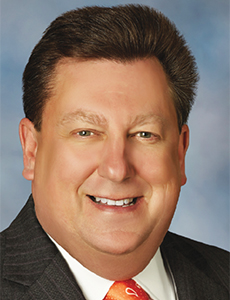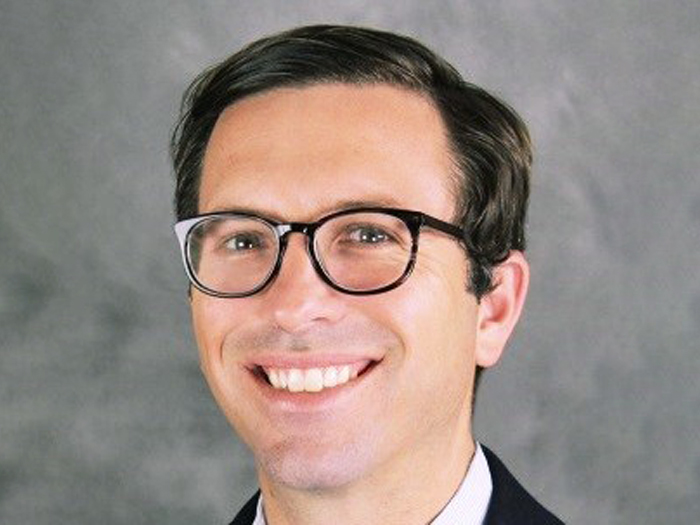Professional Liability
The Promise of Telemedicine

Talk to a hospital risk manager in the Midwest and they will say this: “We don’t have enough beds and providers to deliver adequate mental health services to wide swaths of the population.”
Now add in the access issues faced by rural residents to health care services in general. Or the fact that many providers do not take Medicaid patients. Or consider the risk of transporting a combative, fearful autistic child to the doctor’s office; or the fear of attack that a health care provider confronts when treating a potentially violent prison inmate.
Telemedicine — the ability for a medical provider to consult with a patient in a video conference — seems to present the cure for these societal ailments.
Its use is taking off like a rocket. The global telemedicine market is expected to be a $35 billion industry by 2020. Just two years ago, according to industry studies, there were approximately 20 million telemedicine consultations. That number is expected to increase to about 160 million — an increase of 700 percent — by 2020.
“We’ve been pretty heavily involved in the telemedicine arena for five years now and have seen exponential growth.” — Danny Talley, director of voluntary benefits, HUB
“We’ve been pretty heavily involved in the telemedicine arena for five years now and have seen exponential growth,” said Danny Talley, a Denver-based director of voluntary benefits with HUB.
Talley said ease of access and the fact that many minor afflictions, from colds to skin rashes, can be addressed in a teleconference are some of the keys to that growth.
The approach also lends itself well to mental health treatment, where talking through an issue with a licensed therapist in a video conference closely approximates a face-to-face visit.
At the very least, said Talley, a video conference with a caregiver can help to assess someone’s mental health and determine whether a face-to-face meeting, or some other intervention, might be necessary.
“With psychiatric care, the bulk of it has to do with talking to the patient, asking them questions,” said Njoki Wamiti, a vice president with IronHealth, the health care division of specialty underwriter Ironshore.
“In my opinion, I don’t think it makes that much of a difference. Whether it’s via a video or one-on-one, you are still having the same conversation,” she said.

Larry Hansard, regional managing director, Arthur J. Gallagher & Co.
“A full 50 percent of our clinical encounters have been in the realm of mental health services. This in part relates to the challenges of a serious shortage of mental health providers in the rural areas of our state,” said Dr. Karen Rheuban, a co-founder of the University of Virginia Center for Telehealth. Last year, the center was renamed the Karen S. Rheuban Center for Telehealth in honor of Rheuban’s work to expand health care opportunities through telemedicine.
“In most circumstances, a high quality video conference comports with the standard of care in mental health,” she added.
But as we assess potential liability in this field, let us not confuse a telephone conversation with a video conference conversation. When it comes to establishing a verifiable doctor/patient relationship, they are two very different things.
Rheuban said the Commonwealth of Virginia and the Drug Enforcement Administration have weighed in on the prescribing of Schedule II through Schedule V psychotropic drugs in the absence of a prior in-person visit.
“We are concerned about the risk of establishing a doctor-patient relationship with a telephone encounter alone that results in the prescribing of controlled substances,” she said.
The UVA program offers telehealth services across the health care continuum, from prenatal to palliative care, to acute care, consultations, follow-up visits and remote patient monitoring. It offers live video-based visits and store forward technologies.
As an example, ophtalmologists with the UVA program have trained community providers to obtain retinal images that are sent to them to screen patients with diabetes for retinopathy, the No. 1 cause of blindness in working adults.
Arthur J. Gallagher Regional Managing Director Larry Hansard, who suffers from frequent upper respiratory infections, recalled his own experience with telemedicine. “The physician looked at my throat via the real time video capability on my smartphone,” Hansard said. There was a prescription waiting for him at the drugstore in 10 minutes.
Compare that experience with having to wait days for an appointment, then taking off from work, driving a half hour or more, waiting to be called in to see the doctor and then driving back to the office.
“Why haven’t we been doing this forever?” Hansard asked.
Minimal Loss History
Telemedicine is growing quickly, so its loss history has yet to be well-established. As things stand, more than 70 percent of telemedicine interactions are for fairly common conditions.
“We are not seeing high-severity-type claims, most of the telemedicine usage we are currently seeing is for low-severity illnesses,” said Hansard.
The loss statistics that are available for telemedicine professional liability losses support Hansard’s statement.
“Licensure is the big risk for telemedicine providers, as they attempt to match a patient with a physician licensed in the state in which the patient is seeking care.” — Larry Hansard, regional managing director, Arthur J. Gallagher & Co.
A 2015 report from the Physician Insurers Association of America revealed that of 94,228 medical professional liability claims in the PIAA’s Data Sharing Project (DSP) for the years 2004 through 2013, 196 claims were connected to telehealth.
The average indemnity loss for a telehealth claim was $303,691, compared to $328,815 for all MPL claims within the DSP.
“Licensure is the big risk for telemedicine providers, as they attempt to match a patient with a physician licensed in the state in which the patient is seeking care,” Hansard said. Many health care insurers will exclude coverage for a claim if it’s proven that the provider was not licensed in the same state where the patient received care.
Imagine a scenario where a patient is a passenger in a car that crosses the state line between Texas and New Mexico and is talking to a telehealth provider on the phone. If the provider is licensed in Texas, but not New Mexico, and there is an adverse event, the claim might not be covered.
“There are so many scenarios where people could cross state boundaries while on a telemedicine exchange,” Hansard said.
Hansard said most telemedicine providers are using smart technology so that they can track patients. But some aren’t.
“Some of the telemedicine providers are relying on older technology and they take the patient’s word for where they are located at the time of treatment,” Hansard said. “This could lead to problems if the patient misrepresents their location and the physician is not licensed in that particular venue.”
Hansard looks at the international use of telemedicine optimistically.
Imagine you are a supervisor on an oil rig in Venezuela. If you had the opportunity, would you rather consult with your doctor back in Texas via a teleportal, or have a face-to-face consultation with someone you don’t know as well.
“I understand that there are certain countries that will grant a U.S. doctor automatic privileges in those countries,” Hansard said. “If that’s true just imagine the possibilities for some of these telemedicine companies to set up shop there.” &









